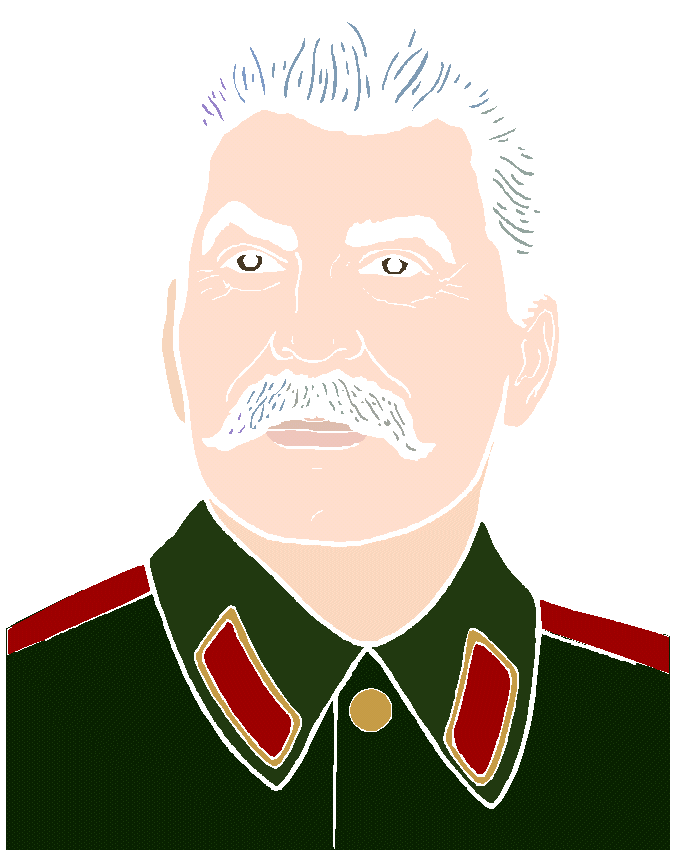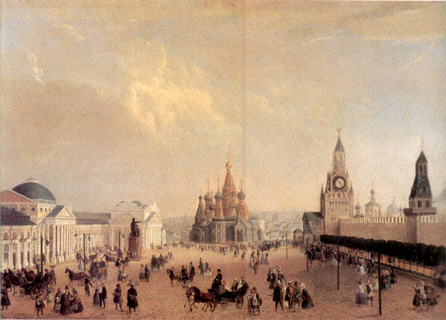

Russia was founded by Scandinavian traders and warriors
in the ninth century. The state adopted the Greek Orthodox practice of Christianity
as the official religion in the late 10th century. The original Russian
state, however, disintegrated into a number of smaller principalities that
eventually fell victim to the Mongols in the early 13th century. In the
15th century, Ivan III (Ivan the Great), overthrew the Mongols and
began to expand Russian territories (1462-1505). Ivan IV 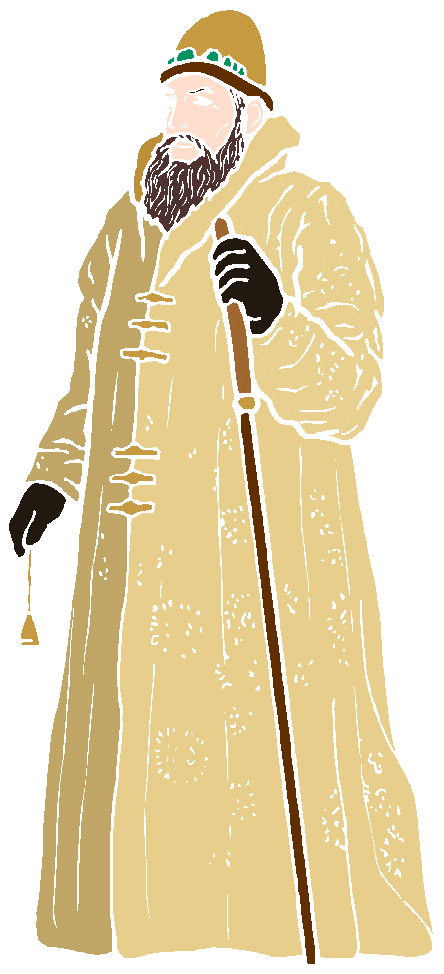 (Ivan the Terrible), who ruled from 1533-1584, continued
that territorial expansion. After Ivan the Terrible's death, Russian rule
remained relatively stable through the reigns of Fyodor I (1584-1598),
Boris Godunov (1598-1605), and Fyodor II (1605). Then came
the "Time of Troubles" marked by pretenders to the throne and
an invasion by Sigismund III of Poland. The Poles were expelled in 1612,
and in 1613 Michael Romanov, grand-nephew of Anastasia Romanov, first
wife of Ivan the Terrible, was crowned czar. Michael Romanov's coronation
began a dynasty that ruled Russia for the next 304 years, until the Bolsheviks
murdered Czar Nicholas II and his entire immediate family in 1917.
(Ivan the Terrible), who ruled from 1533-1584, continued
that territorial expansion. After Ivan the Terrible's death, Russian rule
remained relatively stable through the reigns of Fyodor I (1584-1598),
Boris Godunov (1598-1605), and Fyodor II (1605). Then came
the "Time of Troubles" marked by pretenders to the throne and
an invasion by Sigismund III of Poland. The Poles were expelled in 1612,
and in 1613 Michael Romanov, grand-nephew of Anastasia Romanov, first
wife of Ivan the Terrible, was crowned czar. Michael Romanov's coronation
began a dynasty that ruled Russia for the next 304 years, until the Bolsheviks
murdered Czar Nicholas II and his entire immediate family in 1917.
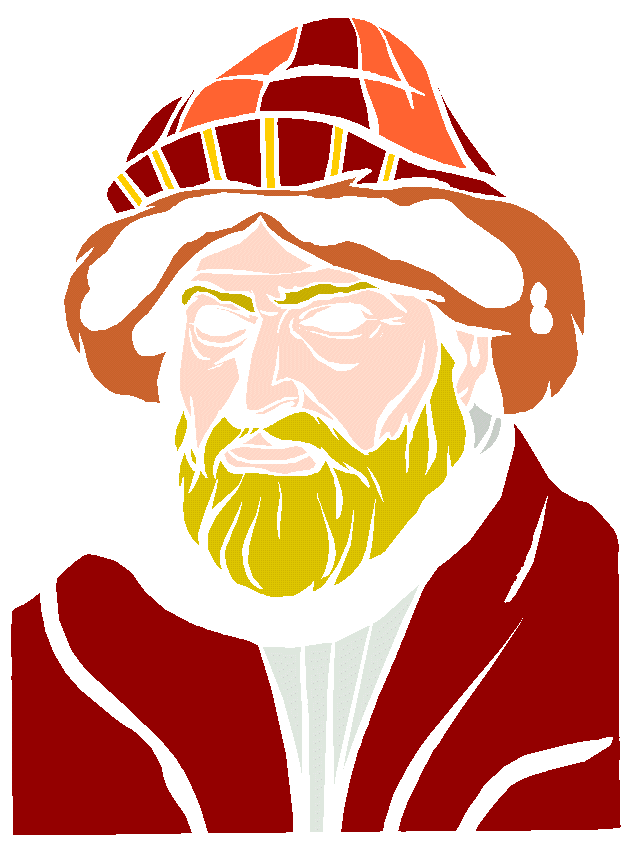
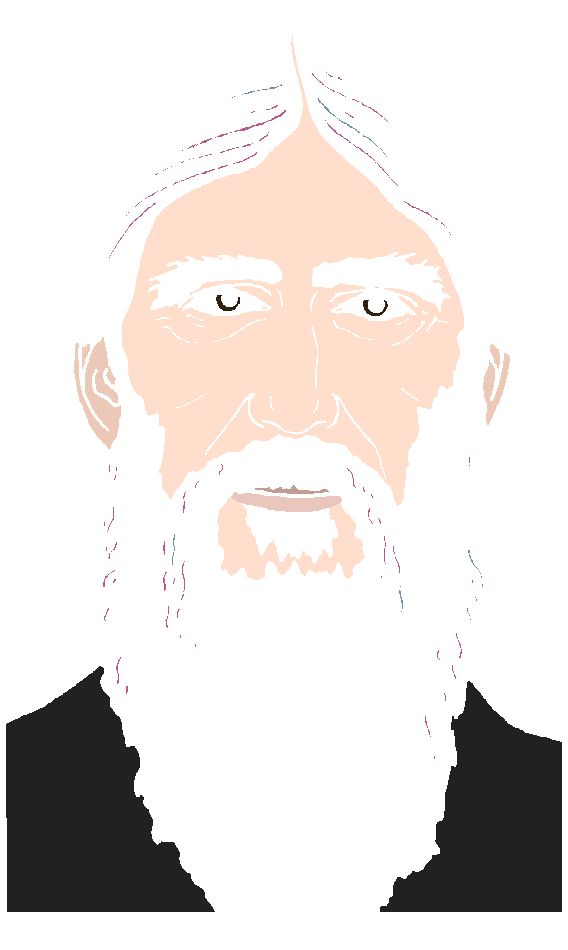
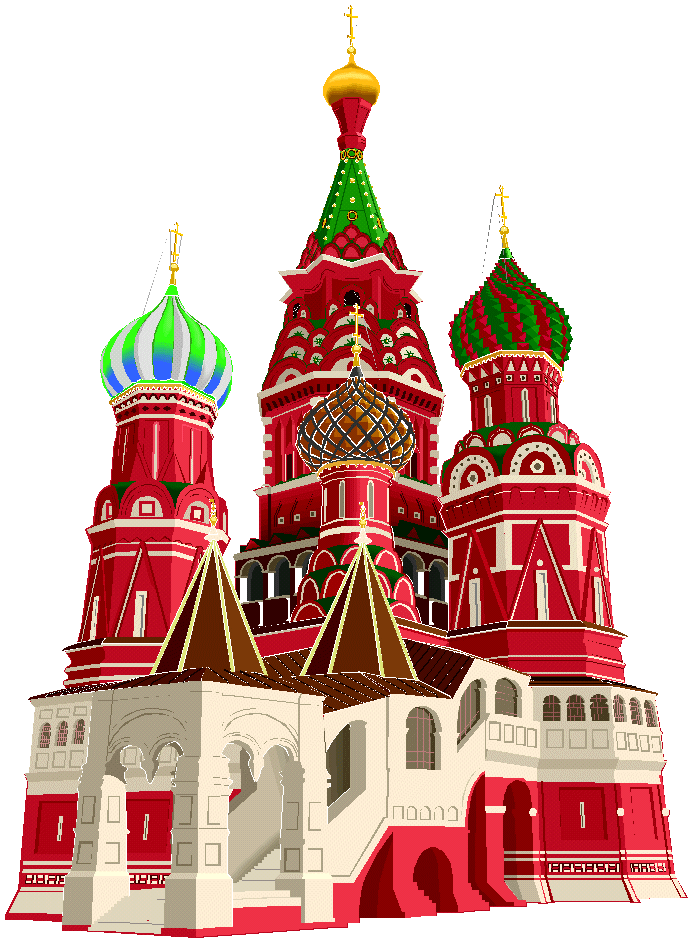
The Russian Revolution
The Russian Revolution took root in 1905 when discontent among all classes of Russians was exaggerated by setbacks in the Russo-Japanese war. In January, peaceful demonstrators marching on the Winter Palace in St. Petersburg were fired on by the czar's troops. That "Bloody Sunday" was followed by several months of riots and strikes throughout the country. In October, the czar granted some basic civil liberties and permitted establishment of a parliament (duma). As soon as matters quietened down, however, the duma was dissolved and the revolution was viciously suppressed.
Revolutionary fervor struck again in 1917 when Russia suffered a number of defeats during World War I and the civil population had to endure extreme shortages. There were riots, strikes, and mutinies. A new duma was established and Nicholas II was forced to abdicate.
The new provisional government, however, had little popular support and virtually no power. Power was held by a council in St. Petersburg (then called Petrograd) made up of workers and soldiers known as the "soviet."
Lenin (born Vladimir Ilyich Ulyanov) was living abroad at the time. Lenin's brother had been hanged in 1887 for plotting to kill Alexander III, and Lenin himself had been imprisoned and banished to Siberia for agitating workers to riot. When released from Siberia in 1900, he left the country. While abroad, he developed the idea that power should be held by a small group of professional and disciplined revolutionaries that controlled the populace through local cells that infiltrated, covertly if necessary, all aspects of daily life. He had returned to Russia in 1905 hoping to take advantage of the discontent at that time, but fled again when he saw the time was not right. The Germans helped him return in May of 1917 knowing he would further destabilize the situation in Russia.
On his arrival in Petrograd, Lenin assumed control of the Bolshevik party. By October the Bolsheviks had gained a majority in the soviet, and Lenin urged the overthrow of the provisional government. On the night of November 6, 1917, Bolshevik workers and sailors captured the Winter Palace and disposed of the provisional leadership. For the next three years (1917-1920), civil war raged throughout the country between the Bolshevik (Red) and anti-Bolshevik (White) armies. Under the military leadership of Leon Trotsky, the Bolsheviks (renamed the Communist Party in 1918) prevailed. Lenin became a virtual dictator and, with the help of Stalin and Trotsky, began to institutionalize a communist government throughout the Soviet Union.
Lenin died in 1924 and a power struggle between Stalin and Trotsky ensued. Stalin (born Joseph Vissarionovich Dzhugashvili) proved to be the more skilled political infighter ("Stalin" means "man of steel.") and Trotsky was deported. After living for various times in Turkey, France, and Norway, Trotsky finally settled in Mexico City - where he was axed to death in 1940. Stalin's reign was marked by periods of ruthless suppression, particularly during the 1930s as he consolidated power and again in the last years of his life. His successors moderated Stalin's practices somewhat, but Russia remained a tightly controlled society. That society unraveled under Gorbachev's policies of "perestroika" and "glasnost."

